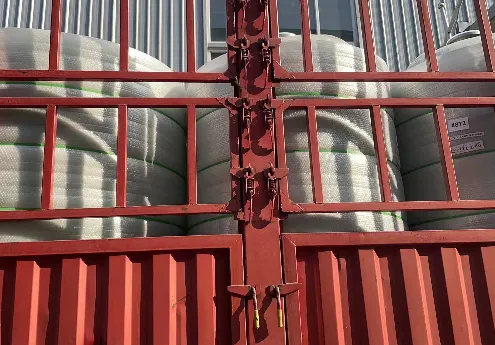loading...
- No. 9, Xingyuan South Street, Dongwaihuan Road, Zaoqiang County, Hengshui, Hebei, China
- admin@zjcomposites.com
- +86 15097380338
- Welcome to visit our website!
Benefits and Applications of Fiberglass Reinforced Plastic Grating for Industrial Use and Safety Enhancements
Fiberglass Reinforced Plastic Grating A Versatile Solution for Modern Applications
Fiberglass reinforced plastic (FRP) grating is a highly durable and versatile material that has gained significant popularity across various industries. Designed to offer superior strength, lightweight characteristics, and corrosion resistance, FRP grating serves as an ideal solution for diverse applications ranging from industrial to commercial settings.
The Composition and Benefits of FRP Grating
FRP grating is manufactured by embedding fiberglass fibers in a resin matrix, usually composed of polyester, vinyl ester, or epoxy. This combination results in a material that is not only strong but also resistant to harsh environmental conditions. The unique properties of FRP include its resistance to chemicals, UV light, and moisture, making it an excellent choice for applications in chemical processing plants, wastewater treatment facilities, and marine environments.
One of the most notable advantages of FRP grating is its lightweight nature. Compared to traditional materials like steel or concrete, FRP grating is significantly lighter, allowing for easier installation and reduced labor costs. Its lightweight also makes it easier to handle, transport, and store, further enhancing its appeal for various projects.
Applications Across Diverse Industries
The versatility of FRP grating allows it to be utilized in a wide range of industries. In the construction realm, it is frequently used for walkways, platforms, and stair treads due to its slip-resistant surface, which enhances safety in both industrial and commercial environments. Furthermore, it can be customized in terms of color and design, meeting aesthetic preferences while providing functional utility.
fibreglass reinforced plastic grating

In the chemical industry, where exposure to corrosive substances is standard, FRP grating stands out as a preventive measure against deterioration. Its ability to withstand harsh chemicals ensures longevity and reduces maintenance costs significantly. This characteristic is also beneficial in the oil and gas sector, where structural integrity is paramount.
Moreover, FRP grating plays a crucial role in wastewater treatment facilities. The material’s resistance to water and chemicals prevents bacterial growth and reduces the risk of algae, contributing to a cleaner environment. Its non-conductive properties are also essential in electrical applications, providing safety in environments dealing with electricity.
Environmental Considerations and Sustainability
As industries increasingly focus on sustainability, FRP grating offers an environmentally friendly alternative to traditional materials. The production process of FRP is generally less energy-intensive, and its durability ensures a longer lifespan, which translates to less waste. Additionally, FRP is recyclable, further reinforcing its status as a sustainable choice.
Conclusion
In conclusion, fiberglass reinforced plastic grating is an innovative material that meets the demands of a variety of applications, driven by its unique properties and benefits. From offering exceptional strength and lightweight characteristics to providing outstanding resistance to harsh environmental factors, FRP grating has positioned itself as a key player in modern industrial and commercial settings. As the world continues to seek sustainable solutions, FRP grating stands out not just for its practicality but also for its contribution to a greener future. Embracing this technology is not merely an investment in material; it is a forward-thinking approach to efficiency, safety, and environmental stewardship.
-
Premium FRP Handrail for All ApplicationsNewsAug.29,2025
-
Low Maintenance FRP Mini Mesh Grating ProductsNewsAug.29,2025
-
Innovative FRP Square Tubes for Modern Industrial SolutionsNewsAug.29,2025
-
FRP Water Storage Tanks Wholesale Solutions for Bulk BuyersNewsAug.29,2025
-
FRP Molded Grating Solutions for Diverse Industrial ApplicationsNewsAug.29,2025
-
Construction Advancements Through FRP Pultruded ProfilesNewsAug.29,2025
-
Why Choose FRP Railings, Guardrails, and Handrail Systems?NewsAug.29,2025
